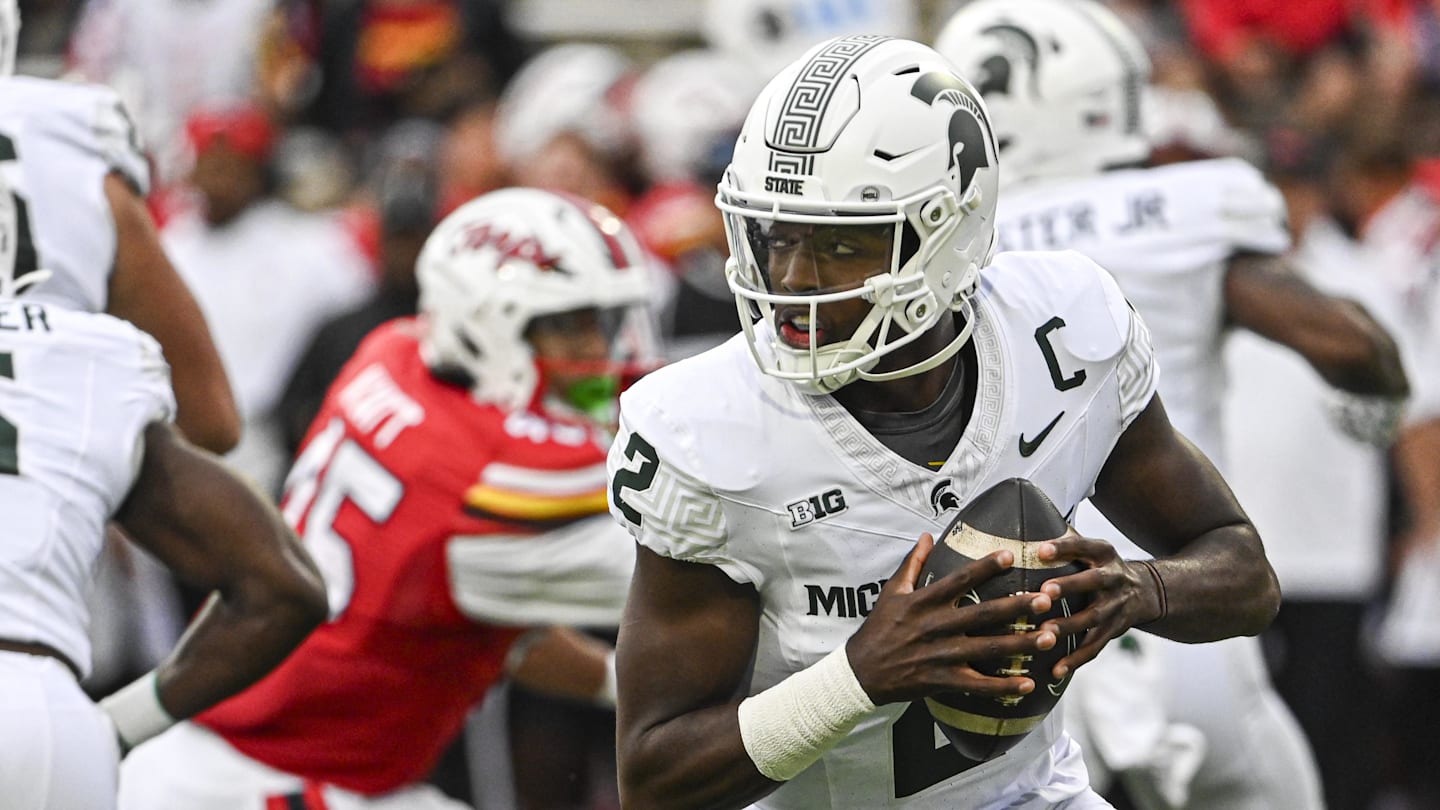Maryland
Maryland higher ed officials focusing on collaboration, teacher training to boost Blueprint reform plan – Maryland Matters

As public school officials continue implementing the Blueprint for Maryland’s Future education reform plan, behind-the-scenes work remains on how colleges can help.
The Maryland Higher Education Commission (MHEC) is an integral part of the Blueprint plan to work on strategies to assess college and career readiness, to expand dual enrollment opportunities for high school students with classes offered at community colleges and to attract more students to teaching and keep them in the profession.
Staff with the commission and Maryland State Department of Education (MSDE) will form an ad-hoc work group to work on those and other Blueprint initiatives to provide guidance on the role of higher education.
Among the questions to be answered is who should teach a dual enrollment class, for which a high school student receives college credit, said Emily Dow, assistant secretary of academic affairs for the commission, in an interview.
“What are some best practices around getting students to college courses? Do you bring the college course to the student? Do you bus students to the community college?” Dow asked. “Those are the kinds of things that our two agencies are prepared and are excited to collaborate on as we implement the Blueprint.”
The work group is part of a MHEC Blueprint plan approved last week by the Blueprint Accountability and Implementation Board, which oversees the education reform plan through 2032.
The Blueprint board, also known as the AIB, provided feedback on the commission’s plan citing “areas of strength and opportunities” and “areas for further growth and improvement.”
In terms of strength, AIB staff noted that the commission’s updated response from its plan submitted in March “shows the agency is taking initiative in strengthening its collaborative relationship and ongoing work with the MSDE.”
However, improvements could be made in some areas, such as where the commission did “not sufficiently” describe how they will coordinate and work with agencies other than MSDE.
Dow said college and university officials, the AIB and local school officials will be among key stakeholders in helping to implement the Blueprint plan.
To address a shortage of qualified teachers, lawmakers approved the Maryland Educator Shortage Reduction Act, which went into effect July 1.
Part of the act includes providing an initial stipend to students who are in their first or second year of post-secondary education and are working toward a teaching degree. To be eligible they must attend a school where 40% of students receive federal Pell grants. Eligible schools include the state’s four historically Black colleges and universities, Hood College and Baltimore City Community College.
Students can start receiving an initial stipend during the current school year. Stipend eligibility continues through the 2025-26 school year. An estimated 300 college students could receive up to $3,500.
The initial stipend’s main goal, according to the legislation, is “to nurture in the recipient a passion for becoming a teacher.”
The Educator Shortage Act also provides eligible student teachers a 10-month, $20,000 internship stipend. This will begin in the 2026-27 school year and continue through 2028-29.
Requirements for students to receive an internship stipend include participating in an internship or practicum working in a public school or publicly funded prekindergarten program. They must also pledge to fulfill a service obligation for two years as a full-time teacher at a “high-needs school, grade level, or content area” where there’s a teacher shortage.
“The Blueprint requires both MSDE and MHEC to set up some [guidelines] for our teacher preparation programs,” Dow said. “I think that will be an initiative that we take on the next six to eight months in collaboration with our colleges and universities.”
Acting Secretary Sanjay Rai said he strongly supports increasing the minimum teacher salaries to $60,000, which legislation behind the Blueprint plan requires to be done by July 1, 2026.
“I think that’s the number one reason why schools are not able to attract and keep teachers. That’s a very, very good thing in the right direction,” he said. “[The Blueprint] is a big deal. I think it is a game changer. It’s fundamentally changing how we approach education.”

Maryland
Sunny, beautiful start to Maryland’s workweek

Watch CBS News
Be the first to know
Get browser notifications for breaking news, live events, and exclusive reporting.
Maryland
Fall chill overnight for Maryland

Watch CBS News
Be the first to know
Get browser notifications for breaking news, live events, and exclusive reporting.
Maryland
3 Takeaways from the Spartans’ Victory over Maryland

The Michigan State Spartans under head coach Jonathan Smith are 2-0 thanks to a road win against a tough Maryland team, 27-24.
Resilience might be the word to describe this squad so far. The Spartans made some big blunders against the Terrapins and still found a way to battle back. The gritty performance might have been enough to get the Spartans into a bowl game.
Here are three takeaways from the Spartans’ win.
Aidan Chiles: Very Young, Very Talented
Chiles looked vastly improved from the home opener against Florida Atlantic. Again, he looked like an 18-year-old quarterback.
Chiles got not just his first passing touchdown as a Spartan, but three passing touchdowns to go with 24 of 39 passing and 363 yards. He also had three interceptions, which very nearly cost the Spartans the game.
Chiles has about as strong an arm as any quarterback to wear the green and white in recent memory. He is dangerous when he is on the move.
Perhaps a critique is that he should try to make more plays with his legs, he has seemed cautious to these first two games. The first pass rusher to get to Chiles likely won’t bring him down — Chiles has a great feel for the pocket and he is quite slippery.
Chiles overcame some poor mistakes and throwing mechanics (his feet tend to get wide and it factors into his overthrows) to lead the Spartans in the most critical of situations against a sturdy Maryland defense.
Huge game for Chiles, who showed why the hype was so promising.
Can the Spartans Stay Healthy on Defense?
Already, this Spartans squad is beaten up. Dillon Tatum, a key defensive back, lost for the season. Wide receiver Alante Brown, whose injury allowed for Nick Marsh to announce himself to the world, lost for the foreseeable future. Kristian Phillips at guard was huge.
During the Maryland game, several Spartans were beat up. Few even had to go into the tent on the sideline. It will be crucial for the Spartans to remain healthy, especially on defense. Most especially in the defensive backfield.
The Spartans are very confident in their young defensive backs — Justin Denson Jr., Andrew Brinson IV, and Jaylen Thompson can all be very good players, but they need more time to develop.
If more Spartans fall to injury, the defensive backfield could get very young.
Nick Marsh is the Real Deal
Marsh was the recruiting gem of 2024, the best player in a class with plenty of good talent. A highly-rated four-star, Marsh was the No. 107-ranked player in the class by 247Sports. Marsh, of course, stood out in fall camp like the high-profile recruit he was.
6-foot-3, 208 pounds, Marsh already had a man’s body. At just 18 years old.
“Possesses the size, athleticism, and multi-sport profile that projects very well in the long term,” 247Sports’ Gabe Brooks wrote. “Traitsy mismatch wideout with high-major impact potential and the ceiling to develop into an NFL Draft candidate.”
With the loss of Brown, Marsh was asked to step up. Step up he did — eight receptions for 194 receiving yards and a touchdown. Wide receivers coach Courtney Hawkins might have his next in the line of Jalen Nailor, Jayden Reed and Keon Coleman.
Don’t forget to follow the official Spartan Nation Page on Facebook Spartan Nation WHEN YOU CLICK RIGHT HERE, and be a part of our vibrant community group Go Green Go White as well WHEN YOU CLICK RIGHT HERE.
-

 Politics1 week ago
Politics1 week agoTrump impersonates Elon Musk talking about rockets: ‘I’m doing a new stainless steel hub’
-

 World1 week ago
World1 week agoBrussels, my love? Is France becoming the sick man of Europe?
-

 Politics1 week ago
Politics1 week agoHarris says no regrets about defending Biden fitness for office
-

 World1 week ago
World1 week agoLocals survey damage after flooding in eastern Romania
-

 World1 week ago
World1 week agoWhy is Belgium struggling to name a European Commissioner?
-

 World1 week ago
World1 week agoTaiwan court orders release of ex-Taipei mayor arrested in corruption probe
-

 Politics1 week ago
Politics1 week ago'For election purposes': Critics balk at Harris' claim she will 'enforce our laws' at southern border
-

 World7 days ago
World7 days agoSeven EU members hadn’t received any post-Covid funding by end-2023





/cdn.vox-cdn.com/uploads/chorus_asset/file/25606640/IMG_4582.jpeg)








